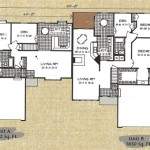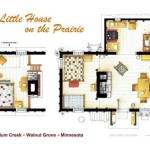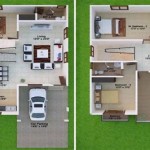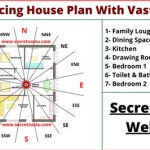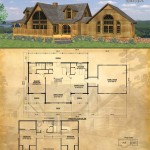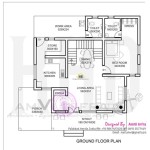Designing the Perfect Tiny House Floor Plan
When designing a tiny house floor plan, careful consideration of essential aspects is crucial to create a functional and comfortable living space. Here are some key elements to keep in mind:Size and Layout: Start by determining the overall size of your tiny house. Consider the number of occupants, desired rooms, and storage needs. The layout should maximize space while maintaining a comfortable flow between different areas.
Kitchen: The kitchen is a vital part of any tiny house. Design a functional layout with adequate counter space, storage, and appliances. Consider a compact kitchen sink, built-in storage, and multi-purpose appliances to conserve space.
Living Room: The living room should be a cozy and versatile space. Design a layout that allows for different seating arrangements, such as a sofa bed or built-in seating. Maximize natural light with windows and incorporate storage options to keep the area tidy.
Bedroom: The bedroom in a tiny house is often a loft or alcove. Consider a space-saving bed design, such as a Murphy bed or built-in platform bed, to maximize floor space. Provide ample storage and consider a privacy curtain or partition to separate the bedroom from the rest of the house.
Bathroom: The bathroom in a tiny house requires careful planning. Design a compact bathroom with a shower, toilet, and mirror. Utilize storage solutions, such as shelves or a medicine cabinet, to keep essentials organized. Consider a compost toilet or water-saving fixtures to minimize environmental impact.
Storage: Storage is crucial in a tiny house. Utilize every nook and cranny for storage options, such as built-in shelves, drawers under the bed, or overhead compartments. Vertical storage, such as wall-mounted shelves, can also maximize space.
Natural Light: Natural light can make a tiny house feel spacious and airy. Incorporate as many windows as possible, especially in the living room and bedroom. Skylights or solar tubes can also provide additional natural lighting.
Ventilation: Proper ventilation is essential for air quality and comfort. Install windows and vents throughout the house to allow for cross-ventilation. Consider a small ceiling fan or air conditioner for additional cooling during warm seasons.
Multi-Purpose Spaces: To maximize space in a tiny house, consider multi-purpose areas. For example, the living room could also serve as a dining area, or the bedroom could incorporate a small desk for a workspace.
By carefully considering these essential aspects, you can design a tiny house floor plan that is both functional and comfortable. Remember to prioritize the needs of the occupants and maximize space while maintaining a sense of openness and natural light.

Tiny House Floor Plans With Lower Level Beds Tinyhousedesign

Tiny House Plan Examples

Easy Tiny House Floor Plan Designs

Tiny House Design Floor Plans

12 X 20 Tiny Home Designs Floorplans Costs And More The Life

Tiny House Plan Examples

Tiny House Floor Plans With Lower Level Beds Tinyhousedesign

2 William S Tiny House First Floor Plan Top And Mezzanine Bottom Scientific Diagram

Tiny House Floor Plans 32 Home On Wheels Design

Pin On Casa Tixcacal 2

